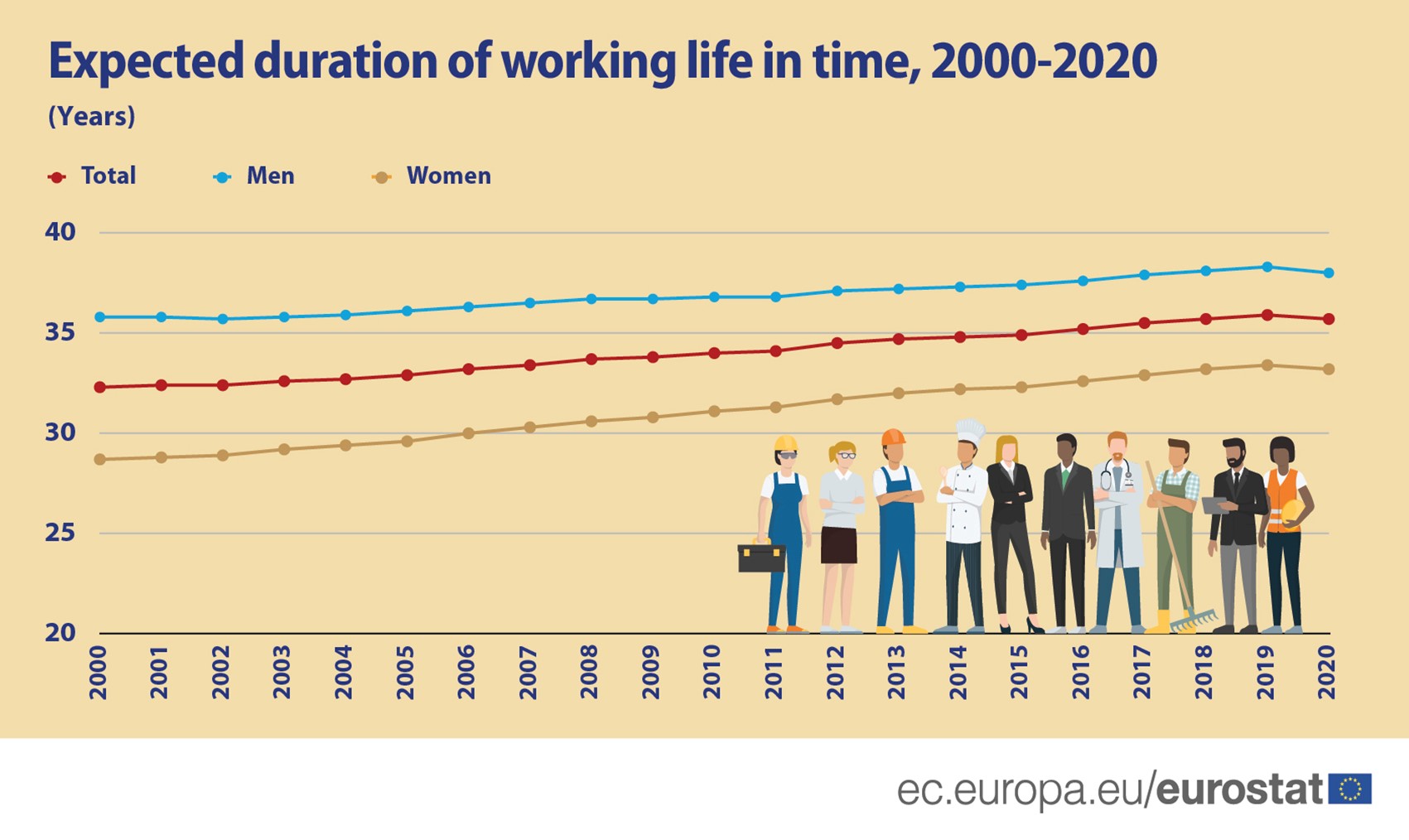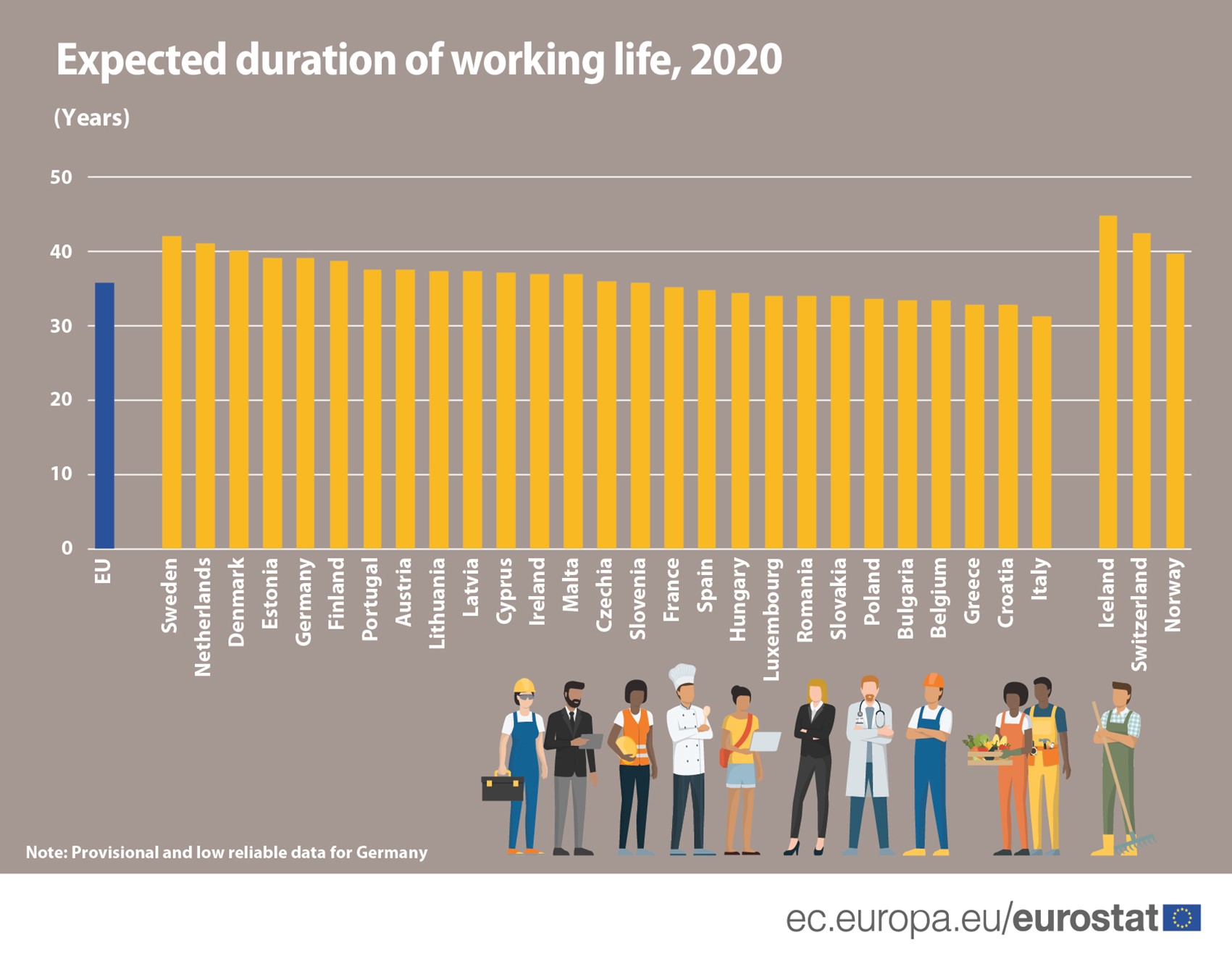In 2020, the expected average duration of working life for 15-year olds in the European Union (EU) was 35.7 years, 0.2 years less than the average for 2019. This is the first time since 2000 that the expected average duration of working life has declined.
The number of years that people can expect to be in the labour force (employed or unemployed) during their life course has also been impacted by the COVID-19 crisis. Among others, people who would have been available to work and would have sought employment, may have given up their search due to low return expectations, and consequently be outside the labour force, reducing the expected duration of working life.
As regards the gender gap, it diminished slowly but steadily at EU level between 2000 to 2020; from 7.1 years in 2000 to 4.8 years in 2020, while the expected working life for women increased by 4.5 years, for men it rose by just 2.2 years over the same period.
Source dataset: lfsi_dwl_a
Expected duration of working life longest in Sweden, shortest in Italy
Among the EU Member States, Sweden, the Netherlands and Denmark had the longest expected duration of working life in 2020 (42.0, 41.0 and 40.0 years respectively). These were the only three EU Member States where the expected duration of working life was 40 years or above. These Member States were followed by Estonia (39.2 years), Germany (39.1 years) and Finland (38.8 years).
In contrast, the shortest expected duration of working life was recorded in Italy (31.2 years) followed by Greece and Croatia (both 32.8 years), Belgium (33.4 years) and Bulgaria (33.5 years).
Source dataset: lfsi_dwl_a
For more information:
- Statistics Explained article Duration of working life - statistics.
- The indicator ‘expected average duration of working life’ measures the expected number of years that a person, at the current age of 15 years, is expected to remain in the labour force throughout his or her life. It is estimated using the life expectancy and the share of employed and unemployed people in the population for each age.
- Specific note on Germany: since the first quarter of 2020, the Labour Force Survey (LFS) has been integrated into the newly designed German microcensus as a subsample. For the LFS, technical issues and the COVID-19 crisis has had a large impact on the data collection processes, resulting in low response rates and a biased sample. The published German data for 2020 are preliminary and may be revised in the future.
To contact us, please visit our User Support page.
For press queries, please contact our Media Support.



